Size and shape anomalies
Size anomalies include microdontia, a smaller tooth, or macrodontia, a larger tooth. There are many types of shape anomalies such as gemination, fusion, concrescence, supernumemrary cusps, supernumerary roots, ectopic enamel, taurodontism, etc.
Microdontia
Microdontia, a tooth smaller than the others, is often seen with hypodontia and affects females more than males. The most affected teeth are the maxillary lateral incisors, also called peg-shaped lateral, and the maxillary third molars.
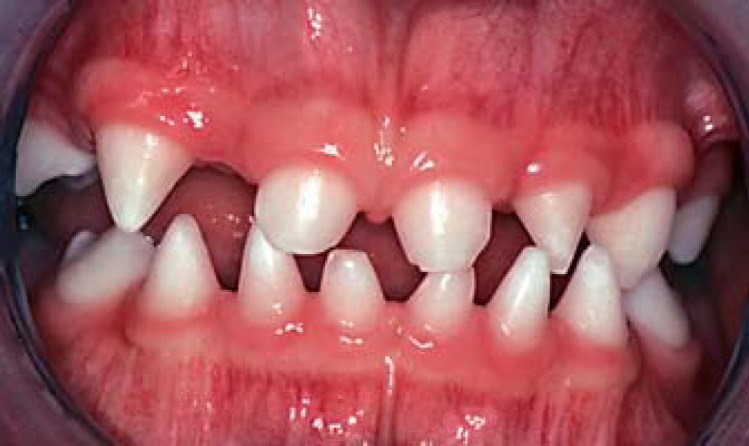
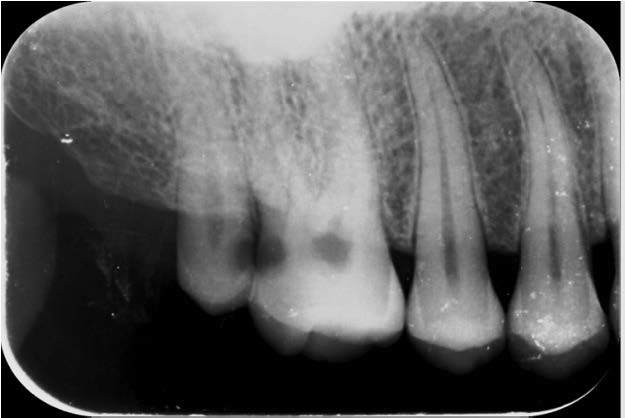
Macrodontia
Macrodontia, a tooth larger than the others, is often seen with hyperdontia and affects males more than females. Isolated macrodontia is rare. Local factors such as hemangioma or genetic factors such as hemifacial hyperplasia can cause macrodontia. If only the root is affected, the term for the anomaly is rhizomegaly. The maxillary canines are the most affected by this anomaly.


Gemination
Gemination is the result of an incomplete division of a tooth germ. The resulting tooth appears larger than normal and the crown looks as if it is splitting in 2. The exact number of teeth are present in the mouth. It occurs more frequently in deciduous dentition and in the anterior region. It may cause a delay of eruption of the permanent dentition.


Fusion
Fusion is when 2 tooth germ fuse together by the dentin. Like gemination, the tooth appears to be larger than normal. There is a reduced amount of teeth in the mouth. It occurs more frequently in deciduous dentition and in the anterior region. It may cause a delay of eruption of the permanent dentition.
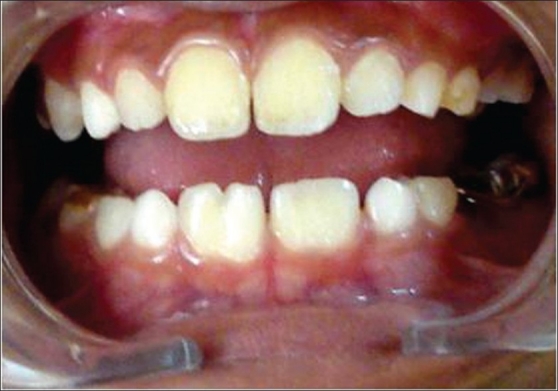
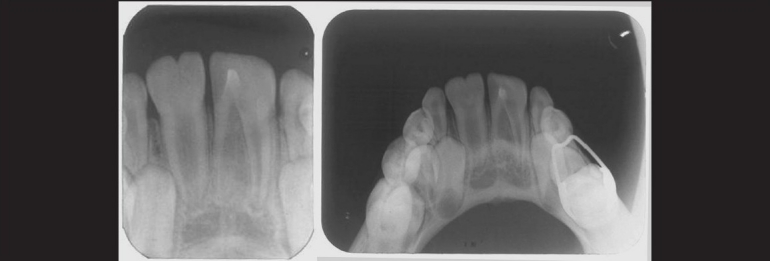
Concrescence
Conscrescence is the fusion of two adjacent teeth by the dental cementum only. It occurs more frequently in the maxillary molar region.


Supernumerary cusps
There are 3 different types of supernumerary cusps. The first type is most most common and it is more seen as a variation of the norm. Is is called the cusp of Carabelli and it is found on the mesio-lingual side of the permanent maxillary first molar. In rarer cases, it can be seen on the deciduous maxillary second molar.
The second type is called Talon cusp and it is found on the lingual surface of an anterior tooth. It is more frequently seen in permanent teeth and on the maxillary lateral incisors, the central incisors, the mandibular incisors and the maxillary canines respectively.
The third type is called Dens evaginatus (Leong's premolar) and it is found on the occlusal surface of mandibular premolars. It is usually bilateral and is often associated with another shape anomaly called shovel-shaped incisors where the marginal ridge on the lingual surface is larger than normal.
Cusp of Carabelli
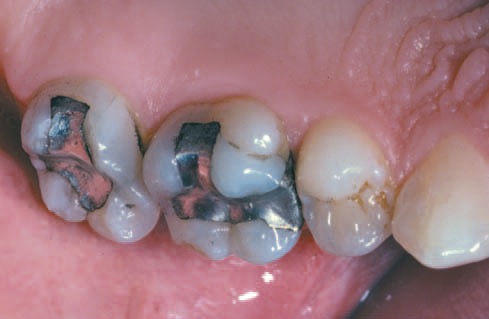
Talon cusp
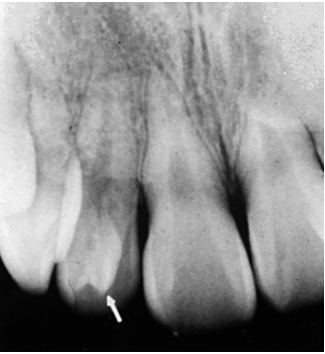
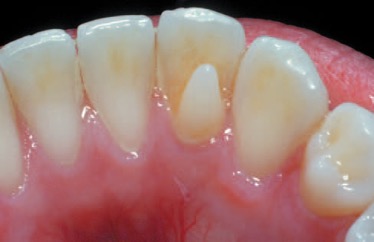
Dens evaginatus (Leong's premolar)
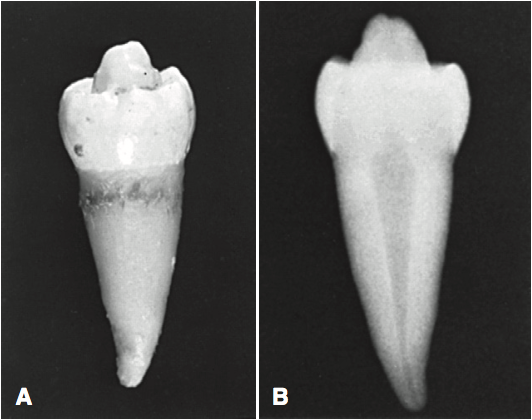
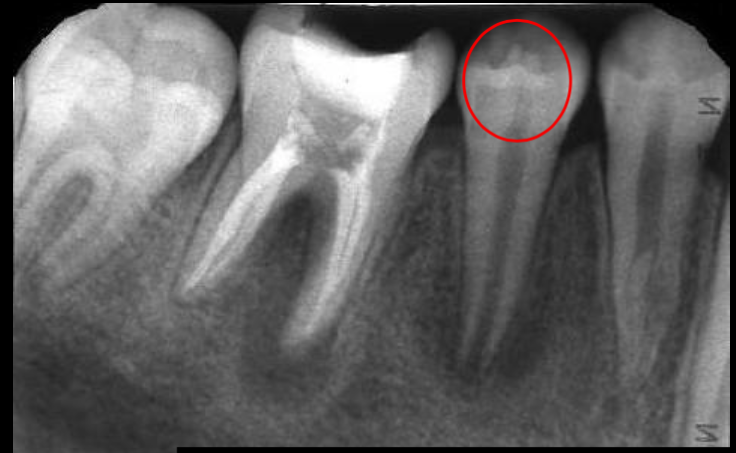
Supernumemrary roots
Supernumerary roots is when the tooth has more roots than normal. It can affect any tooth in both dentitions but it affects more commonly the third molars (normally have 2 roots in the mandible and 3 roots in the maxillary), the mandibular canines (normally have 1 root), and the maxillary first premolars (normally have 2 roots).
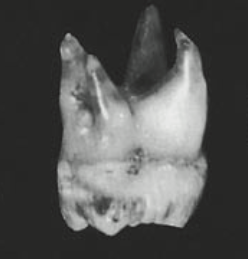
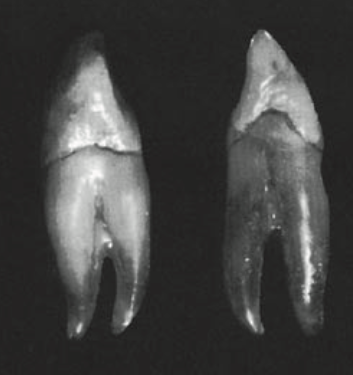
Ectopic enamel
Ectopic enamel is when there is a presence of enamel where there normally shouldn't be. There should not be any enamel on the root, below the cemento-enamel junction. Ectopic enamel can contribute to larger periodontal pockets. There are 2 different type of ectopic enamel.
The first type is enamel pearls where 1-3mm globules of enamel can be found in the furcation of molars. They are more commonly seen on maxillary molars than mandibular molars.
The second type is cervical enamel projections where triangular projection on enamel extend beyond the cemento-enamel junction and can extend all the way to the furcation. They are found more frequently on mandibular molars than maxillary molars.
Enamel pearls
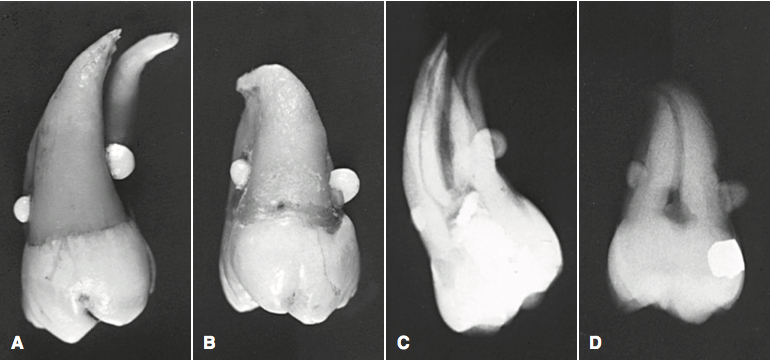
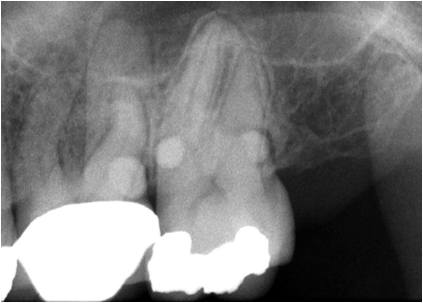
Cervical enamel projections
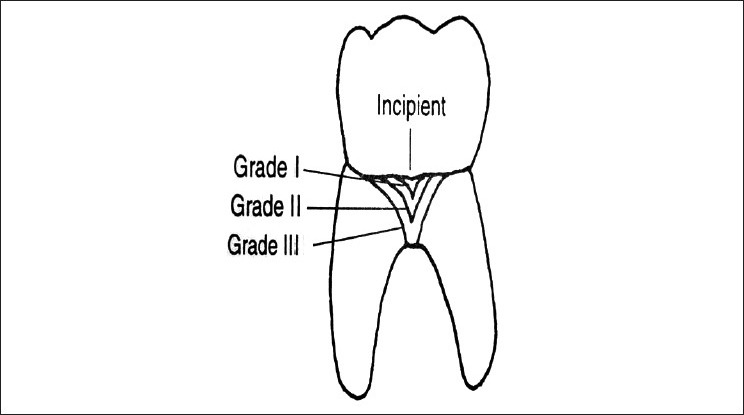
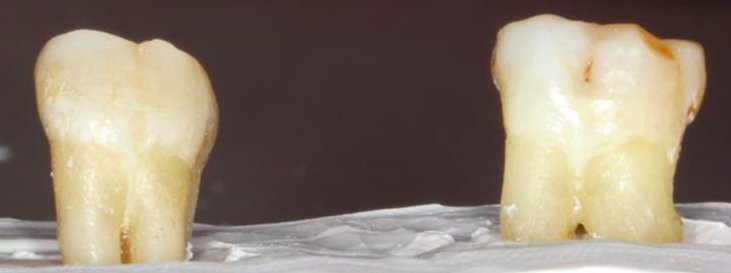
Taurodontism
Taurodontism is an anomaly of the pulp chamber. The pulp chamber's vertical dimension is increased and there is a late division of the roots, the root canals are short. Clinically, the teeth appear normal, however on the radiography the anomaly of the pulp chamber can be seen. Molars are more affected and often it is seen bilaterally. It can be found in isolated cases or with other disorders such as amelogenesis imperfecta or syndromes such as Down's and Klienfelter's.


- Laugel-Haushalter V, Langer A, Marrie J, Fraulob V, Schuhbaur B, Koch-Phillips M, Dollé P, Bloch-Zupan A. From the transcription of genes involved in ectodermal dysplasias to the understanding of associated dental anomalies. Mol Syndromol. 2012 Oct;3(4):158-68.
- Hans MK, Chander S, Ahluwalia AS, Chinna H. Non syndromic bilateral microdontia of maxillary second molars: a very rare finding. J Clin Diagn Res. 2015 Apr;9(4):ZJ03-4.
- Adel Kauzman, Faculté de médecine dentaire, Université de Montréal
- Canoglu E, Canoglu H, Aktas A, Cehreli ZC. Isolated bilateral macrodontia of mandibular second premolars: A case report. Eur J Dent. 2012 Jul;6(3):330-4.
- Shokri A, Baharvand M, Mortazavi H. The largest bilateral gemination of permanent maxillary central incisors: Report of a case. Journal of Clinical and Experimental Dentistry. 2013;5(5):e295-e297.
- Mohan RPS, Verma S, Singh U, Agarwal N. Gemination. BMJ Case Reports. 2013;2013:bcr2013010277.
- Prabhakar AR, Kaur T, Nadig B. Bilateral fusion of permanent mandibular incisors with Talon’s cusp: A rare case report. Journal of Oral and Maxillofacial Pathology : JOMFP. 2009;13(2):93-96.
- White S, Pharoah M. (2014). Oral Radiology Principles and Interpretation. Missouri: Elsevier Inc.
- Ballullaya SV, Vemuri S, Kumar PR. Variable permanent mandibular first molar: Review of literature. J Conserv Dent. 2013 Mar;16(2):99-110.
- Nelson, S.J. (2010).
Wheeler's Dental Anatomy, Physiology, and Occlusion. Missouri: Elsevier. - Bhusari P, Sugandhi A, Belludi SA, Khan S. Prevalence of enamel projections and its co-relation with furcation involvement in maxillary and mandibular molars: A study on dry skull. J Indian Soc Periodontol. 2013 Sep;17(5):601-4.
- Ko MJ, Cho CM, Jeong SN. Characteristics of the molar surface after removal of cervical enamel projections: comparison of three different rotating instruments. J Periodontal Implant Sci. 2016 Apr;46(2):107-15.
